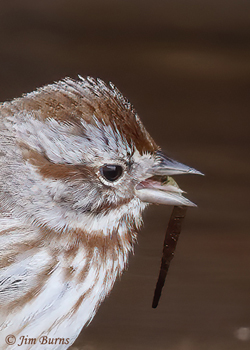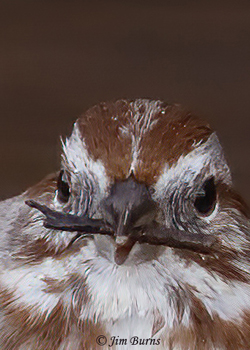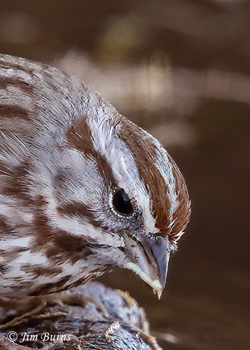|
|
Of course health concerns, primarily, and some initial government restrictions, have precluded our jumping on airplanes this past year and, really, how many times can you visit your “local patch” day in and day out without becoming a little jaded. My local patch is ten minutes from my front door, but what the pandemic has done for me is turn more distant birding sites, thirty minutes to an hour away, into multiple local patches. So, now I have a handful of sites, in a loose rotation, that I look forward to visiting every week, sites I typically would go once a month at most before the pandemic.
In my more frequent forays into these sites I have, as you’d suspect, discovered many niches and nooks of habitats and species long overlooked when I spent more time farther from home. Song Sparrows are common, but they aren’t yard birds unless you have a cabin on the water, and even by sparrow standards they aren’t exactly eye candy, but last week I was fascinated to spend an entire morning peering behind the curtain into their lifestyle, observing what they do when they’re . . . well, being Song Sparrows.
On a typical winter Arizona morning, cloudless azure sky with crisp temperatures, I arrived at my favorite site along the river at dawn. Hurrying to get into the spreading sunlight because the thermometer in the car hadn’t broken forty yet, I was vaguely thinking my target species, photographically, should be one of the resident Bald Eagles hopefully perched on snag or perhaps waterfowl or waders feeding in the river itself. Nothing. Not a duck or a raptor in sight, and not warm enough yet for the bugs that would later in the day attract flycatchers and warblers.
Seeing movement along a back channel along the bank, I reluctantly moved out of the sun into deep shade and inadvertently walked into a graduate course in avian biology. In water ankle deep, their ankles not mine, were several Song Sparrows doing . . . something. Never having seen a “flock” of Song Sparrows together, I assumed it was an extended family with young of the previous summer or just several unrelated individuals attracted by a food source. But what was the food source underwater, in deep shade, in temperatures not too much above freezing?
The sparrows were picking and probing under the surface of the water and appeared to be pulling up tiny sticks, twigs really, and then discarding them. Were there tiny insects on the wood? Or under the bark? The birds were oblivious to my presence if I moved slowly, and I was able to get within minimum focusing distance with my telephoto lens. Through the viewfinder I realized they were, indeed, working the twigs with their beaks and tongues before dropping them. With no background in aquatic entomology, I had no idea what I was witnessing, but I photographed it for a couple hours, all in deep shade, and magnifying some shots on the back of the camera, I’d sometimes see one of the sparrows with what looked like a caterpillar in its beak.
I was clueless but intrigued, I have books, I have a friend who spent his career as a fisheries expert, and I had pictures. It took me a couple days, but I finally got the whole story. Some caddisflies (there are over 1000 species in North America) build, in their larval stages, a hard encasement using silk from their own bodies and sand particles from the streambed to protect their soft abdomen, leaving their heads protruding for feeding.
Song Sparrows apparently know this as a protein source. At times their behavior resembled a hiker with an opened energy bar package, squeezing the bottom end and nibbling bites off the exposed, open end. One person I queried about this suggested it might be the first time this behavior of Song Sparrows had ever been documented.
My magical morning proved another example of what makes birders tick, and what has been documented is that countless numbers of home bound pandemic refugees suffering from acute cabin fever have discovered the outdoors and birding. Much as for them the pandemic has forced me, even as it restricted my regional travel, to broaden my local horizons, and it reminded me there are no limits to the way birding can bring joy and wonder to our lives.
|
|



